
F-Zero X is a 1998 futuristic racing video game for the Nintendo 64 console, developed and published by Nintendo. It is a sequel to the original F-Zero (1990), and is the first F-Zero installment with 3D graphics. The game has a steep learning curve and its gameplay experience is similar to that of the original. An Expansion Kit, including a track and vehicle editor, was released in Japan in 2000.

Rock n' Roll Racing is a vehicular combat-based racing video game developed by Silicon & Synapse and published by Interplay Productions for the Super Nintendo Entertainment System in 1993 and the Mega Drive/Genesis in 1994. The game prominently features a number of popular heavy metal and rock songs in its soundtrack, hence the game's title. After Silicon & Synapse rebranded into Blizzard Entertainment, a port to the Game Boy Advance was released in 2003. In celebration of the company's 30th anniversary, a new version titled Definitive Edition alongside emulated re-releases of the original game were re-released for Microsoft Windows, Nintendo Switch, PlayStation 4 and Xbox One as part of the Blizzard Arcade Collection in February 2021.

1080° Snowboarding is a snowboarding video game developed and published by Nintendo for the Nintendo 64 in 1998. In the game, players control one of five snowboarders from a third-person perspective, using a combination of buttons to jump and perform tricks across eight levels.

Need for Speed: Underground 2 is a 2004 racing video game developed by EA Black Box and published by Electronic Arts. It is the eighth installment in the Need for Speed series and the direct sequel to Need for Speed: Underground. It was developed for Windows, GameCube, PlayStation 2, and Xbox. Game Boy Advance and Nintendo DS versions were developed by Pocketeers, and a PlayStation Portable version, titled Need for Speed: Underground Rivals, was developed by Team Fusion. Another version for mobile phones was also developed by Ideaworks Game Studio. Like its predecessor, it was also commercially successful, selling around 11 million copies worldwide and breaking sales records in the United Kingdom.

Metropolis Street Racer (MSR) is a racing video game developed by Bizarre Creations and published by Sega exclusively for the Dreamcast. Initially intended as a launch title for the Dreamcast, its release in Europe was delayed until November 2000, with a North American version following in January 2001. A Japanese version was anticipated by February 22, 2001, but was ultimately canceled after Sega discontinued support for the Dreamcast.

R.C. Pro-Am II is a racing video game developed by Rare and released by Tradewest for the Nintendo Entertainment System in December 1992. The game is the sequel to the 1988 R.C. Pro-Am and features similar gameplay with a wider variety of tracks, currency-based vehicle and weapon upgrades, and bonus stages. In R.C. Pro-Am II, four players, either human or artificial intelligence, race on a series of tracks to finish first while avoiding obstacles and hazards. The winner receives race points and money. The game features a multiplayer mode in which up to four human players can compete against each other simultaneously.

Need for Speed: High Stakes, released as Need for Speed: Road Challenge in Europe, is a 1999 racing video game developed by EA Canada and EA Seattle and published by Electronic Arts for the PlayStation and Microsoft Windows. It is the fourth game in the Need for Speed series and a follow-up to Need for Speed III: Hot Pursuit. The game features more realistic elements than its predecessors and introduced a damage system that allows cars to take damage when colliding with objects, affecting their appearance and performance. It also introduced a series of economy-based tournaments, awarding players with a cash prize that can be spent on repairing, purchasing, or upgrading cars for subsequent races. The game's Hot Pursuit mode, which was introduced in Hot Pursuit, was expanded with more options, allowing players to control police pursuits attempting to stop racers.
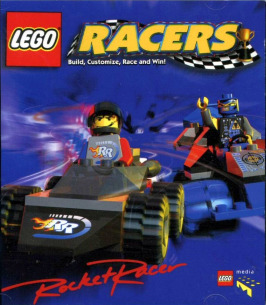
Lego Racers is a 1999 Lego-themed kart racing video game developed by High Voltage Software and published by Lego Media for Microsoft Windows, followed by console ports to Nintendo 64 and PlayStation. Set in the fictional "Legoland" universe, the single-player mode follows various minifigure characters competing in a racing competition created by a fictional racing champion called Rocket Racer.

Need for Speed: Carbon is a 2006 racing video game and the tenth installment in the Need for Speed series. Developed by EA Black Box, Rovio Mobile and published by Electronic Arts, it was released on October 31, 2006, for the PlayStation 2, PlayStation 3, Xbox, Xbox 360, GameCube, Windows, and Mac OS X, and on November 19, 2006 as a launch title for the Wii and in 2008 for arcade cabinets. A portable version, Need for Speed: Carbon – Own the City, was released for the PlayStation Portable, Game Boy Advance, Nintendo DS. and Zeebo, While it featured similar gameplay to the console version, the portable versions included new or modified gameplay elements, a different setting and storyline, and a different selection of teammates. This is the final installment in the series to be released for Game Boy Advance.
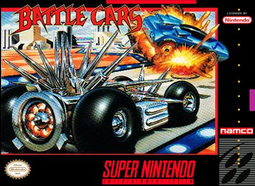
Battle Cars is a racing video game for the Super NES that was developed by Malibu and published by Namco in 1993. It is a futuristic racing game in which cars are equipped with multiple weapons which are used to eliminate opponents.
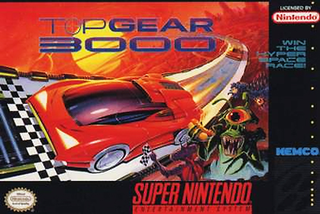
Top Gear 3000, later released in Japan as The Planet's Champ: TG3000, is a racing video game developed by Gremlin Interactive and published by Kemco for the Super Nintendo Entertainment System. It is the third game in the original Top Gear trilogy, and the last in the series to be developed by Gremlin. 3000 heavily resembles the previous Top Gear 2, but is set in the distant future.

Top Gear 2 is a racing game video game developed and published by Gremlin Interactive. A direct sequel to the 1992 game Top Gear, it was first released by Kemco for the SNES in North America in September 1993, and then the Super Famicom in Japan on December 22. It was later ported to the Amiga and Amiga CD32 in September 1994 by Gremlin Interactive, and to the Sega Genesis in September by Vic Tokai. While more realistic than its predecessor, Top Gear 2 maintained the arcade-style gameplay the series is known for.
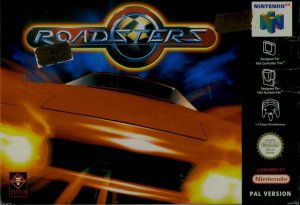
Roadsters is a racing game released by Titus Software for Nintendo 64 in 1999, and for PlayStation, Dreamcast and Game Boy Color in 2000. It is a car racing game that features both licensed cars from manufacturers and unlicensed cars from imaginary manufacturers that are based on and bear great resemblance to their equivalent, real car models. The game also includes a multi-player mode supports up to 2 human players that can compete in any of the available circuits with 4 more CPU controlled racers. A PlayStation 2 version was originally planned to release on April 11, 2001. Box art for unreleased PS2 game url=https://www.ign.com/games/roadsters
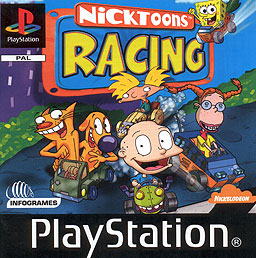
Nicktoons Racing is a Nickelodeon crossover racing video game. The game was first developed by Pipe Dream and released for the Game Boy Color, while versions for different platforms were released in subsequent years. Most versions were developed by Software Creations with the exception of the Game Boy Advance version, which was developed by Crawfish Interactive, and the arcade version, which was developed by Chicago Gaming.

Cruis'n is a series of racing video games created by Eugene Jarvis and owned by Nintendo. Midway Games publishes various installments under license from Nintendo. The series distinguishes itself from other racing games with its over-the-top presentation and fast-paced gameplay, featuring a wide variety of vehicles and tracks based on a number of real world locations. The series debuted in North American and European arcades in 1994 with the release of Cruis'n USA, which, along with Rare's Killer Instinct, was advertised as running on Nintendo's Ultra 64 hardware. Two sequels followed, Cruis'n World and Cruis'n Exotica, which featured new vehicles and tracks. All three games were released for the Nintendo 64 as well, with Exotica also being released for the handheld Game Boy Color. The next game in the series, Cruis'n Velocity deviated from the traditional arcade gameplay of the series and was released for the Game Boy Advance.

Asphalt 3: Street Rules is a racing video game developed by Gameloft Shanghai and the third major game of the Asphalt series following Asphalt: Urban GT 2. It was released in 2006 on Java-based mobile phones, followed by a 3D version in 2007 on other mobile phones and was also released in 2008 for Nokia's N-Gage 2.0 platform and in 2009 for Android. It was notably the first mobile game to be played at the World Cyber Games competition.

Need for Speed: Most Wanted is a 2005 racing video game, and the ninth installment in the Need for Speed series following Underground 2. Developed and published by Electronic Arts (EA), it was released in November 2005 for GameCube, PlayStation 2, Windows, Xbox, and Xbox 360 alongside two distinct versions for Nintendo DS and Game Boy Advance. Another version for PlayStation Portable titled Need for Speed: Most Wanted 5-1-0, was released at the same time and featured alternative gameplay.
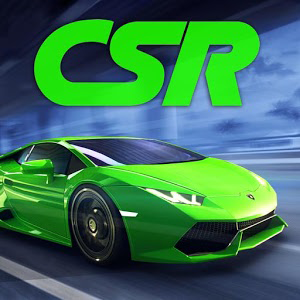
Custom Street Racing is a free-to-play drag-racing game by Boss Alien and NaturalMotion Games. In the game, the player takes the role of a new racer looking to gain fame in a deserted city ruled by five racing "crews". A sequel was released on iOS and Android on June 29, 2016, called CSR Racing 2. The early access as beta was released on Malaysia in January 2024, called "CSR Racing 3"

Asphalt 8: Airborne is a 2013 racing video game developed by Gameloft Barcelona and published by Gameloft. It is the tenth major game of the Asphalt series. It was released on August 22, 2013, for iOS and Android, November 13 for Windows 8 and Windows Phone 8, January 15, 2014 for BlackBerry 10, and April 5, 2015 for Tizen. Its successor, Asphalt Legends Unite, was announced on February 26, 2018. The game has about 470 million players, according to the game description in the App Store.
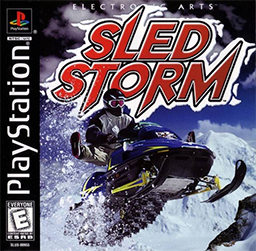
Sled Storm is a snowmobile racing video game published and developed by Electronic Arts. It gained critical acclaim due to its original concept of being one of the first snowmobile racing titles.




















